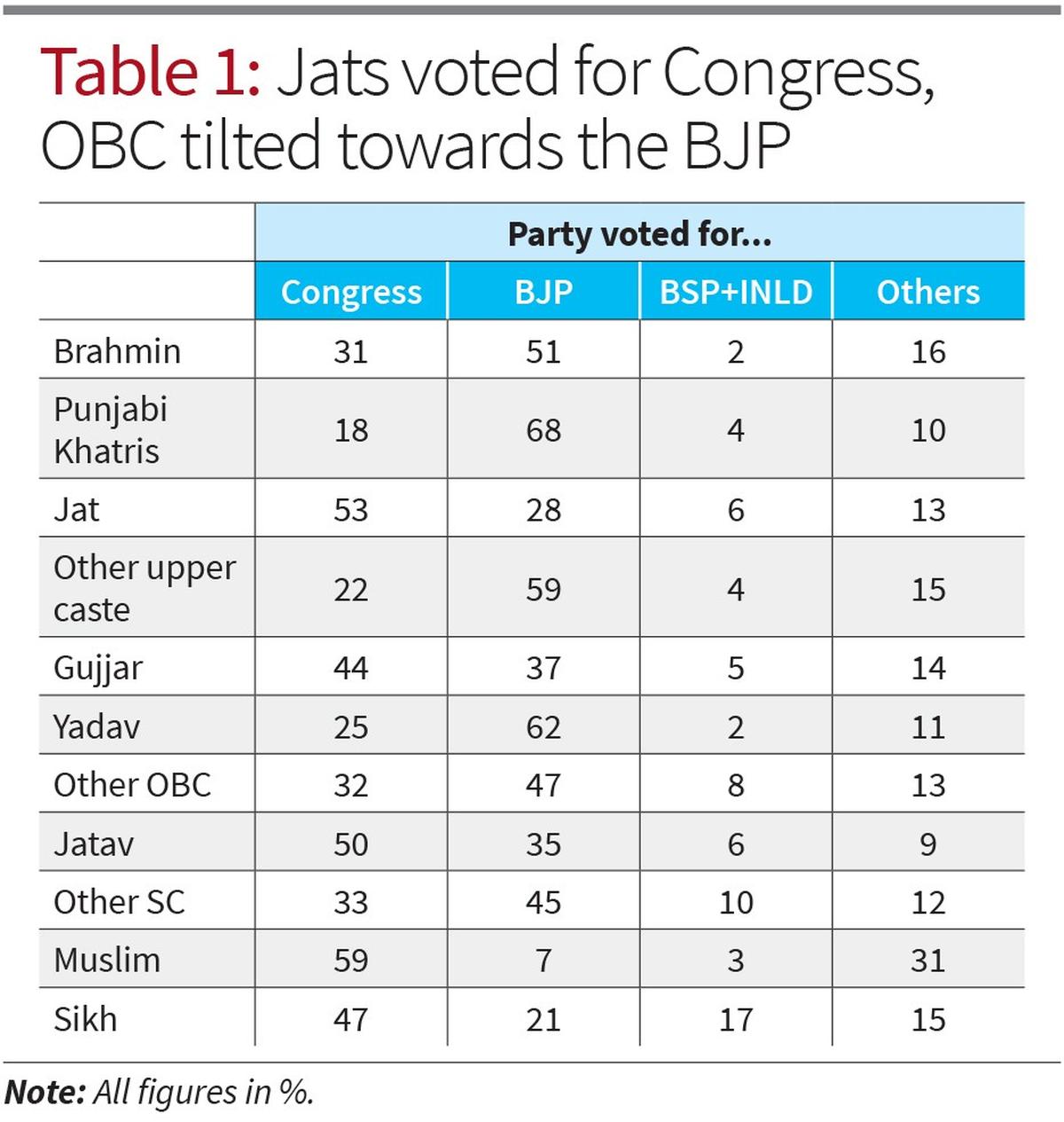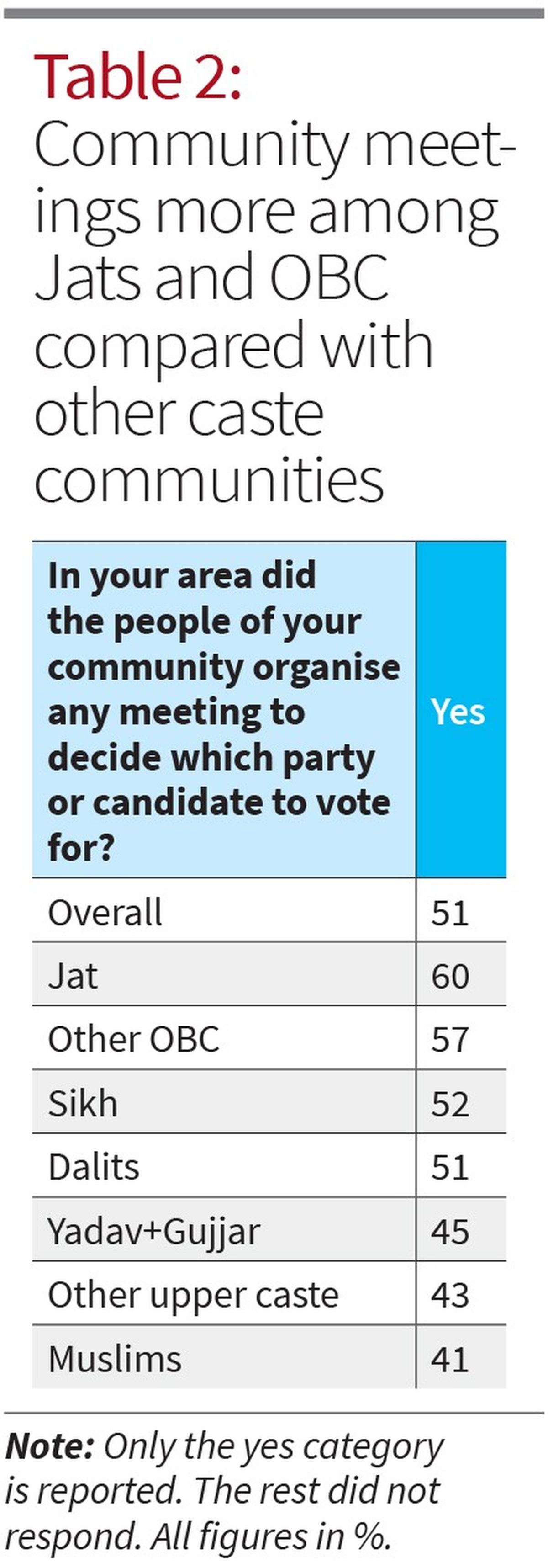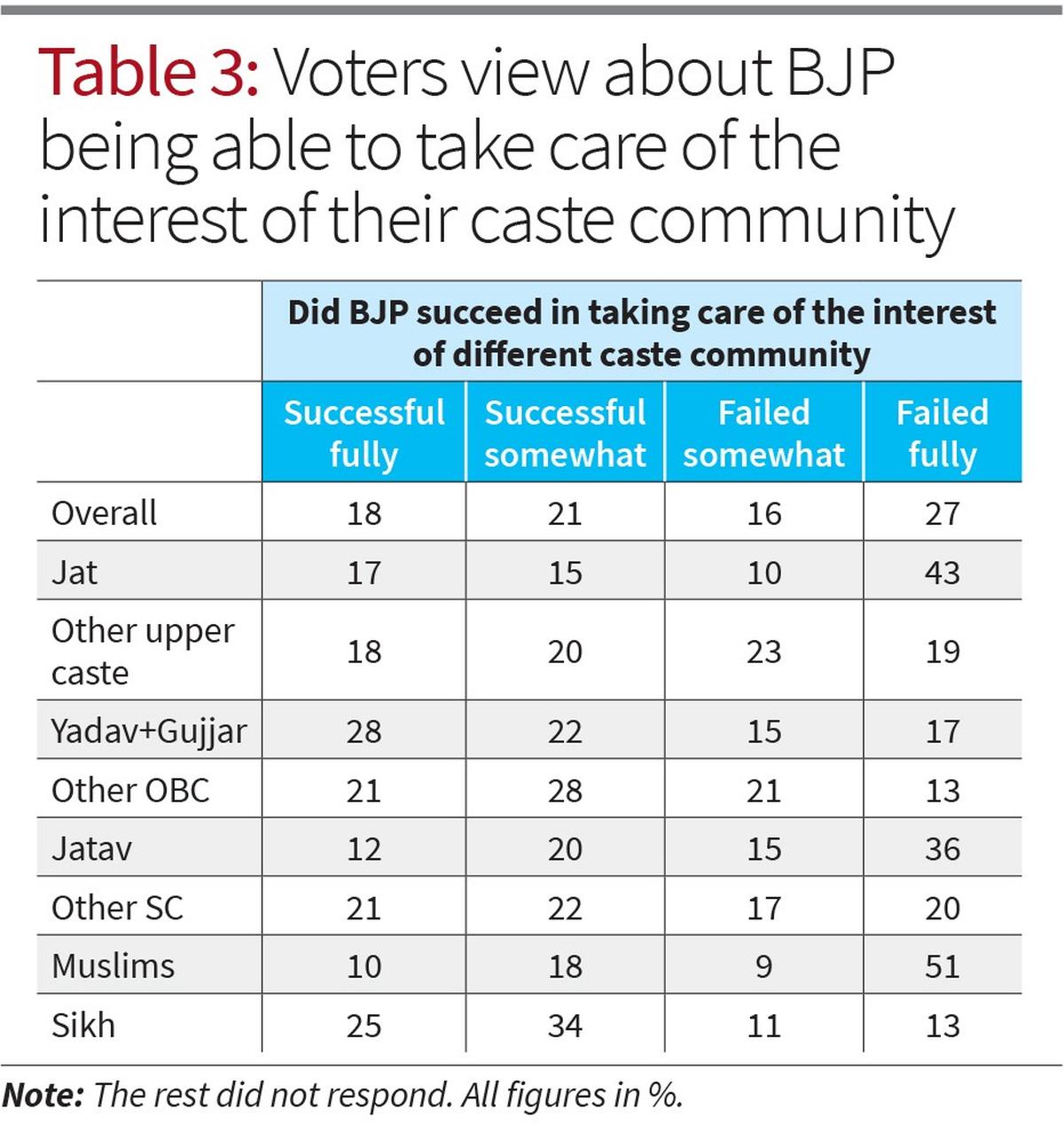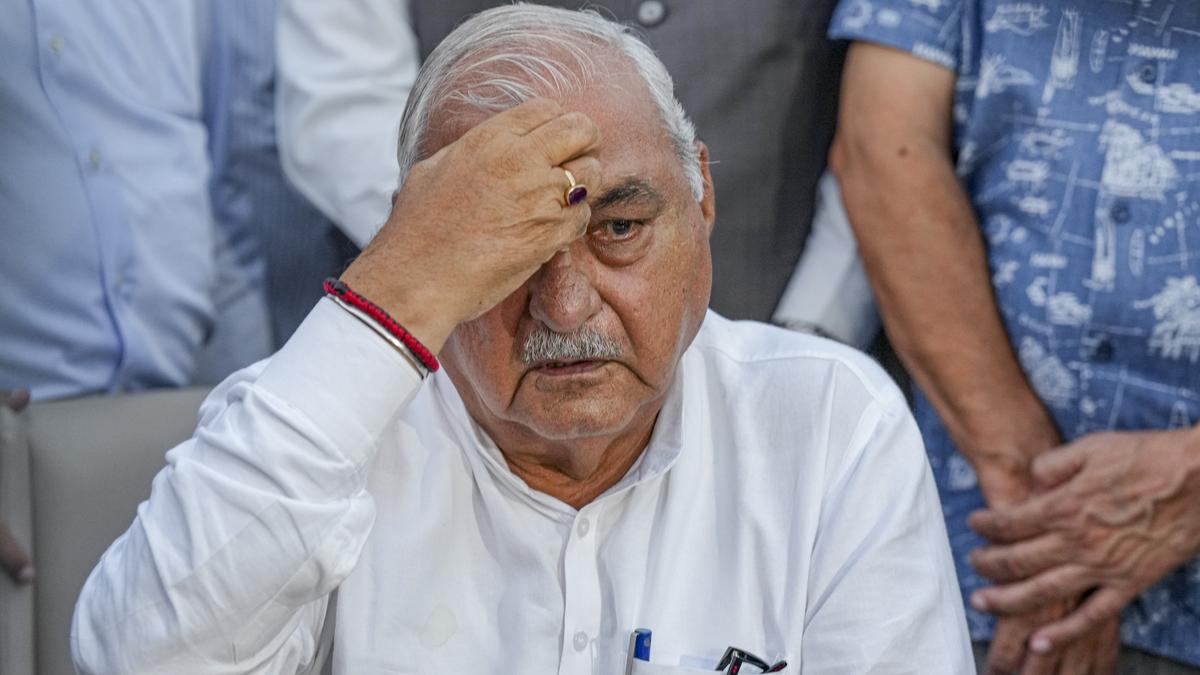Former Haryana Chief Minister and Congress leader Bhupinder Singh Hooda speaks with the media in Rohtak on October 8, 2024.
| Photo Credit: PTI
For months, discussions surrounding the Haryana Assembly election revolved around the mobilisation of the Jats by the Congress and non-Jats by the BJP.
The findings from the CSDS-Lokniti survey indicate that the two main rival parties mobilised what they believed to be their core supporters. Among the numerically significant and socially dominant Jats, a little over a half (53%) voted for the Congress, while one in three (28%) supported the BJP — marking it a limited consolidation for the Congress. The BJP primarily targeted non-Jat and OBC voters and appeared to be successful in this strategy. Additionally, the BJP led over the Congress among Brahmins, Punjabi Khatris, Yadavs, and non-Jatav Dalits, contributing to the party’s third successive victory in the Haryana Assembly election (Table 1).

The Congress successfully mobilised a significant number of Jatav votes, a community to which Congress leader Kumari Selja belongs, along with support from the Gujjar community, Muslims, and Sikhs, who constitute 7% and 4% of total voters, respectively (Table 1). The mobilisation of Jats and OBCs in favour of the Congress and the BJP can be attributed to organised community meetings held prior to the election. Among Jats, six in 10 (60%) mentioned that members of their community had organised meetings to decide which party or candidate to vote for, while nearly the same fraction (57%) of other OBC voters indicated the same. Voters from other caste communities also mentioned such community meetings before the election, but their prevalence was notably lower compared with those of Jats and other OBCs (Table 2).

This divided support for the Congress and the BJP stems from voters’ perceptions of how effectively the BJP addressed the interests of their caste communities. Survey findings clearly indicate that a significant number of Jats believed their community’s interests had been neglected — a sentiment that is understandable given the BJP selected both its Chief Ministers over the past 10 years from non-Jat communities in a State where Jats have historically played a dominant role in politics. Similar sentiments were expressed by voters belonging to the Jatav and Muslim communities, albeit to varying degrees (Table 3). Yet one notices that there was a limit to the Jat consolidation by the Congress as the regional players as well as the BJP garnered a substantive chunk of Jat votes.

Overall, the 2024 Haryana Assembly election results underscore the pivotal role of caste dynamics in voter mobilisation, with both the Congress and the BJP drawing on their respective caste bases. The Congress’s success in mobilising Jats, Jatavs, and minority communities had its limits. The BJP’s appeal to non-Jat upper castes and OBC voters highlights the fractured nature of caste politics in Haryana and provides an explanation for the BJP’s success.
The author is professor and co-director, Lokniti-CSDS
Published – October 10, 2024 03:44 am IST

